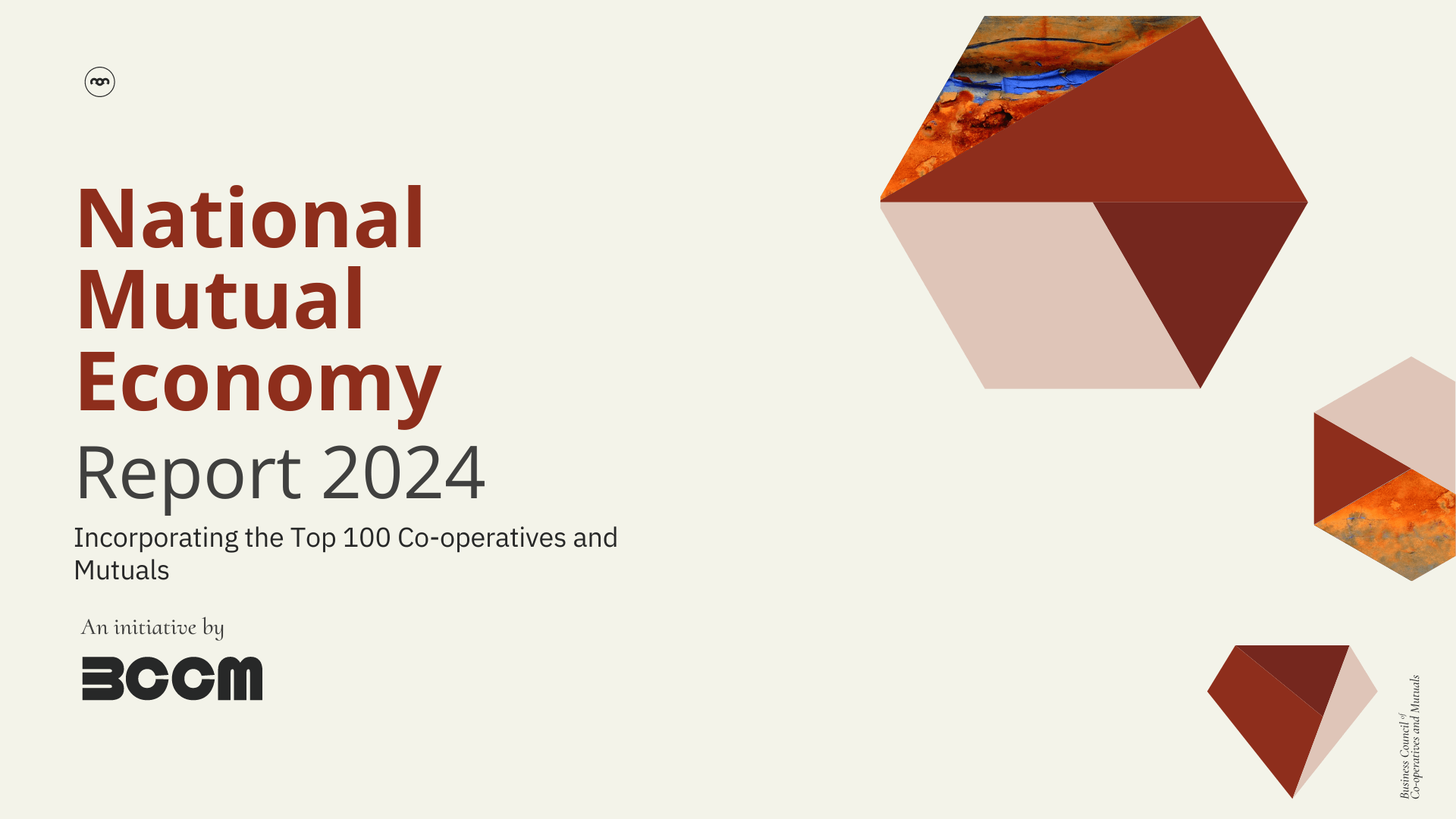2024 National Mutual Economy Report
Incorporating the Top 100 Co-ops and Mutuals
Australia’s top 100 co-operative and mutual businesses posted a record performance in the 2023 financial year, defying domestic and international headwinds to grow total revenue by 16.1 percent to $43.2 billion.
The 2024 National Mutual Economy (NME) Report showed strong revenue growth across most parts of the sector despite global inflationary pressures.
The report also showed a dramatic return to profitability for the sector with the top 100 posting a combined net profit of $1.83 billion, more than double the previous year’s $712 million.
The strong earnings turnaround reflected an improved performance by co-ops and mutuals operating in health insurance, agribusiness and motoring services, while those in financial services were impacted by the higher interest rate environment which dampened consumer borrowing.
The top 100 list features some of Australia’s biggest unlisted companies including West Australian grain handler CBH, health insurers HCF and HBF, motoring groups NRMA, RACQ and RAA as well as dairy producer Norco.
Read the full 2024 National Mutual Economy (NME) Report.
Explore the 2024 NME Report
More NME Report
This is the eleventh annual report on the scale and performance of the Australian co-operative and mutual sector. The report aims to map the size, composition and overall health of the sector using the Australian Co-operative and Mutual Enterprise Index (ACMEI), which started in 2012 with the first national data collection process in 2014.
The ACMEI is a long-term research project undertaken by the University of Western Australia. Its purpose is to provide a better understanding of co-operative and mutual businesses and their contribution to the national economy.
Despite representing some of the largest businesses in their sectors and being found across a range of industries, the overall size, structure and contribution of the co-operative and mutual sector in Australia is not well understood due to data gaps, difficulties in definition and lack of clarity over which firms should be identified as co-operatives or mutuals.
For this year’s report on the ACMEI, see Mazzarol, T. (2024), Australia’s Leading
Co-operative and Mutual Enterprises in 2024, CEMI Discussion Paper Series, DP 2401, www.cemi.com.au, Centre for Entrepreneurial Management and Innovation.
The 2024 National Mutual Economy Report (NME 2024) was produced thanks to sponsorship by HCF, research by the University of Western Australia and the input of BCCM members and the co-operative and mutual movement.
From the University of Western Australia, we would like to thank Professor Tim Mazzarol for his contribution to this year’s report.
We would also like to acknowledge BCCM researcher Karl Coombe for leading the work on this year’s NME Report.
Following another strong performance by Australia’s co-operative and mutual sector, it is my pleasure to welcome you to the 2024 National Mutual Economy (NME) Report.
This year’s publication, in partnership with the University of Western Australia and the Australian Co-operative and Mutual Enterprise Index (ACMEI) research project, marks the eleventh edition of the only national longitudinal study on the co-operative and mutual sector in Australia. With this report, the NME continues to pursue its objectives to provide visibility of the social and economic impact of the co-op and mutual business model and respond to the need for robust data to inform our sector’s leaders and showcase the vital importance of the sector to the social and economic fabric of our nation.
The resilient Australian co-operative and mutual sector has again flexed its economic muscle, posting stellar revenue growth of 16.1 per cent to hit a record $43.2 billion for the nation’s Top 100 member-owned enterprises. This remarkable performance came despite raging inflation, soaring interest rates and global supply chain disruption.
Australia’s more than 1,800 co-ops and mutuals demonstrated the durability of their member-first model, swinging back to a combined $1.83 billion profit, which underscores the durability of these distinctly sustainable businesses. Sectors like health insurance, agribusiness and motoring services performed strongly, offsetting headwinds faced by other sectors.
The numbers are staggering: Australian co-operatives and mutuals now have combined active memberships of 34.8 million. It is clear that as a nation we entrust these enterprises with vital services from banking to housing.
The sector is also creating meaningful work for more people, employing 89,000 Australians.
Heavyweights like WA’s CBH ($6.19 billion in revenue), HCF ($3.9 billion), and Capricorn ($3.4 billion) topped the rankings. But the real strength lies in our model’s localised benefits and community reinvestment approach, allowing co-ops and mutuals to thrive with long-term horizons.
As the UN declares 2025 the International Year of Cooperatives, the Australian co-operative and mutual sector is proving it has the resilience to overcome economic shocks and ensure Australians retain access to the goods and services they need, no matter where they live. This year’s report provides a powerful reminder that prioritising members over quarterly returns is a winning strategy.
The NME Report provides commentary on the economic performance of the sector, as well as an update on gender inclusion in the Top 100 co-operatives and mutuals. We also examine the significant impact of community investment programs emerging from the sector, including Australia’s first co-operative development fund, The Bunya Fund.
The BCCM wishes to extend its deep appreciation to our research collaborators and contributing organisations, without whom this research would not be possible. We thank HCF for their generous support of the NME project. We look forward to progressing this important work together.
Melina Morrison
Chief Executive Officer | Business Council of Co-operatives and Mutuals







